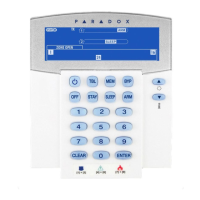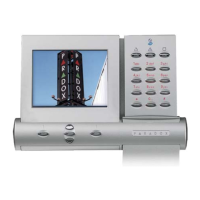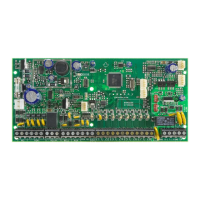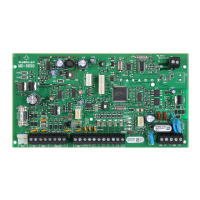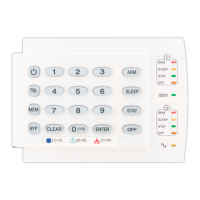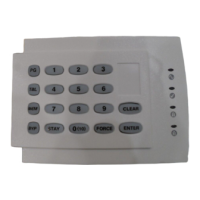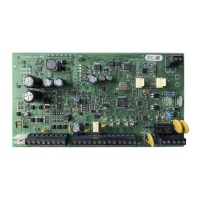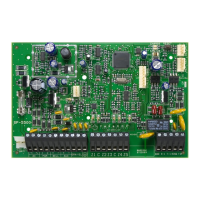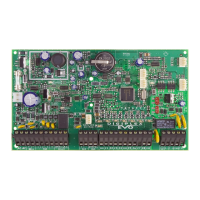Do you have a question about the Paradox K32LED and is the answer not in the manual?
| Housing Material | Plastic |
|---|---|
| Type | Keypad |
| Display | LED |
| Compatibility | Paradox security systems |
| Power Supply | 12V DC |
| Zone Input | 1 |
| Partitions | 2 |
| Operating Temperature | 0°C to 50°C |
Step-by-step guide to add or change user information and codes.
Procedure to remove an existing user from the system.
Configure system clock, date, and audible zone alerts.
How to view and understand system trouble conditions and indicators.
Understanding the auditory cues provided by the keypad for confirmation or rejection.
How to adjust keypad sound levels and screen illumination.
Detailed layout and function of K636 and K321 keypad models.
Detailed layout and function of K10LEDV/H and K32LED keypad models.
How to turn StayD on/off and change arming modes (Stay, Sleep, Full).
How to arm/disarm the system when entering or leaving the premises with StayD.
Temporarily open zones without triggering alarms and delay zone re-arming.
Methods to arm the system for different security levels and user presence.
How to arm the system while allowing free movement within the premises.
How to reinstate previously bypassed zones after disarming.
How to view alarms and deactivate the system.
How to trigger emergency alarms for police, medical, or fire.
Responding to fire alarms and general fire safety advice.
Procedures for testing system functionality and routine maintenance.
Configuring the system to send SMS alerts for events.
How to control the system remotely via SMS commands.
Instructions for interacting with the VDMP3 voice dialer.
Using PGMs to control external devices based on system events.
Dividing the system into separate zones for independent control.
Accessing system functions via specific key combinations.
Configuring panic alarm types and PGM utility keys.
Entering the phone number for GSM module notifications.
Programming user codes, access levels, and system delays.
Setting system time/date and configuring WinLoad communication.
Sending test reports and scheduling automatic arming.
Configuring various system behavior options like siren squawks.
Product warranty, system limitations, and VoIP connection warnings.
FCC compliance, safety warnings, and legal notices.
